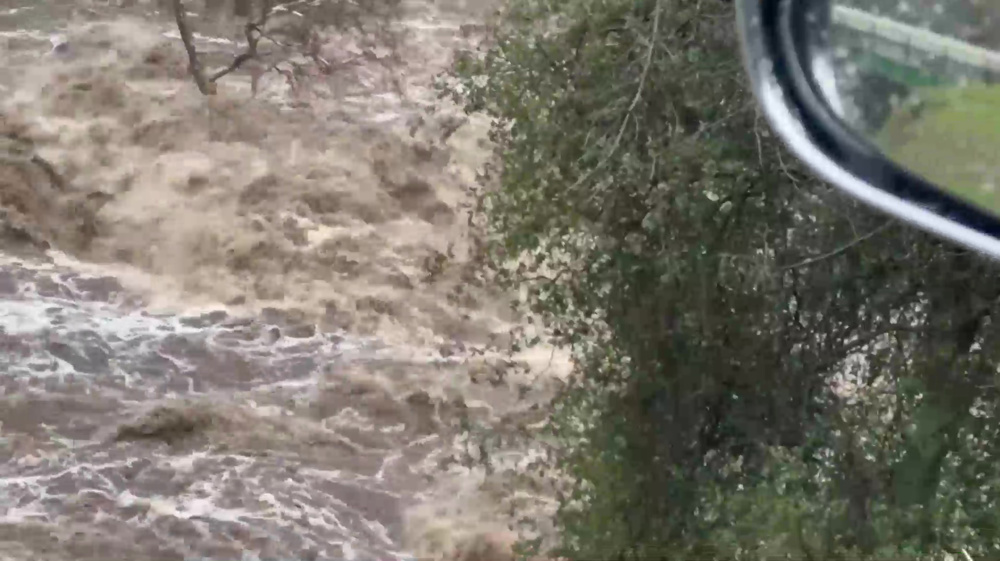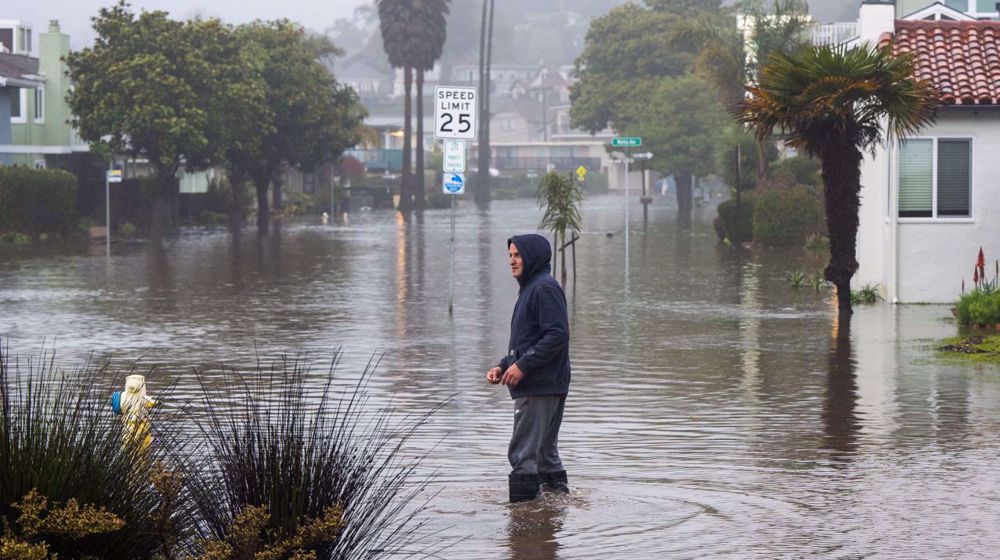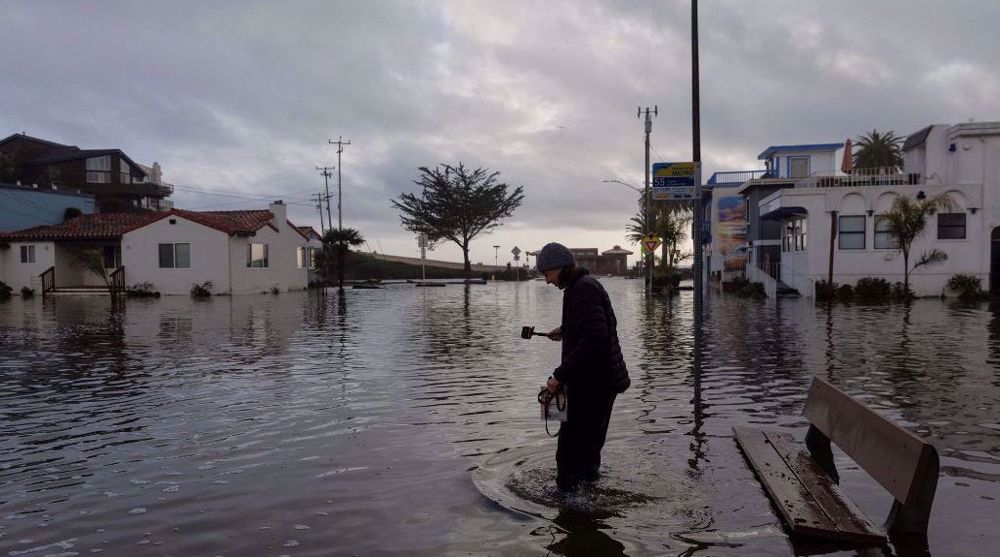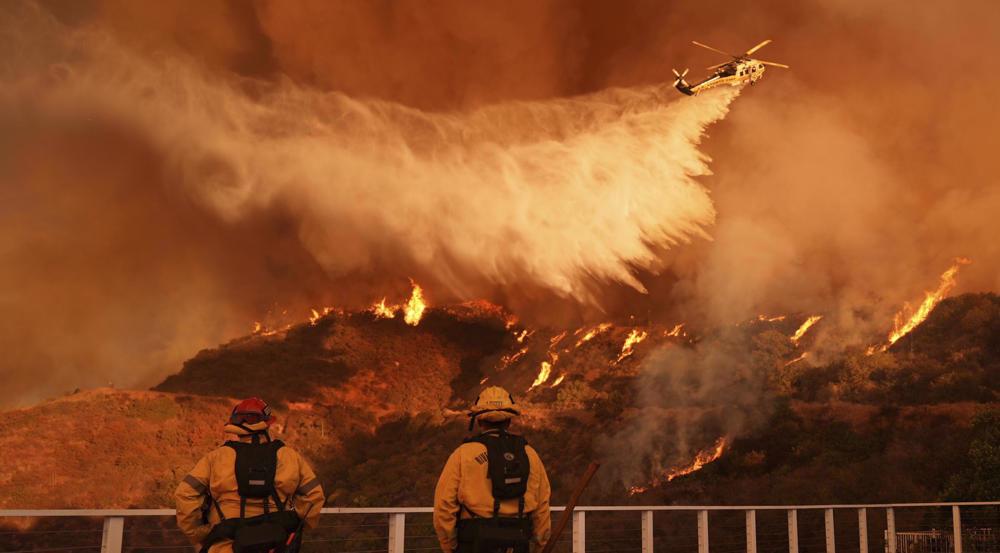New storms hit US state of California as it faces already 'disastrous' floods
The latest in a damaging succession of storm systems blew into California on Saturday, bringing heavy flooding to already waterlogged regions and threatening snowfalls of up to six feet (two meters) in areas.
The latest system was expected to bring "heavy lower-elevation rain, significant mountain snow, and strong winds," with "another surge of Pacific moisture" expected Monday, the National Weather Service (NWS) said.
It predicted "disastrous flooding" across the lower Salinas River valley, an important agricultural region south of San Francisco Bay.
An AFP journalist saw the Salinas River overtopping its banks in many spots, at times covering farm fields for hundreds of yards (meters), even as the rain continued under leaden skies.
In Spreckels, a community a few hundred yards from the river, most residents had opted not to evacuate despite warnings from authorities.

A few miles away, 30-year-old farm worker Erick Diaz watched the flooded fields from his modest home located near the river. Despite evacuation orders, he too had remained.
"I have nowhere to go and for the moment everything is fine," he said.
Governor Gavin Newsom, however, warned Californians that they were not in the clear yet.
"We're not done," he said Saturday after visiting residents impacted by the storms.
Urging residents to remain vigilant, he said Californians should continue to exercise "common sense over the course of the next 24 to 48 hours."
Nearly 26,000 Californians remained under a flood watch Saturday evening, according to the NWS, with tens of thousands ordered to evacuate.
The storms of recent weeks were originally welcomed -- coming after years of drought -- but by now have brought "disastrous" flooding, officials say.
Around 2330 GMT, there were approximately 20,000 homes without power, according to poweroutage.us.
At least 19 people are known to have died from storm-related causes.
"This place was hit hard by the drought over the past years," 58-year-old farm worker Manuel Paris told AFP near Salinas, adding, "We're not used to this much rain anymore."
The NWS said an additional two to three inches of rain (5.0 to 7.5 centimeters) could cause new flooding and mudslides, with parts of the Sierra Nevada seeing three to six feet of snow, and heavy winds buffeting central and coastal California at up to 50 miles (80 kilometers) per hour.
Dangerous travel
The most populous US state has been pummeled by near-record downpours over three weeks -- an average of nine inches of rain has fallen -- with the Salinas Valley among the hardest hit.
On Friday, forecasters warned that the Monterey Peninsula could be cut off and the whole city of Salinas -- home to 160,000 people -- could be hit by flooding.
Between storms, workers have rushed out to clear up some of the mess, shoveling mud from roads even in the heart of Los Angeles and using heavy machinery to remove fallen trees or clear rockslides.
And forecasters say the unsettled weather in the US West -- associated with what is called an atmospheric river pattern -- is not done.
Over the mountains, heavy snow was making travel dangerous or impossible on a three-day holiday weekend honoring civil rights leader Martin Luther King Jr.
Amid heightened risk of avalanches, officials urged people to stay home.
Authorities in the Lake Tahoe resort area posted pictures showing dozens of vehicles lined up on a road, stalled by a fierce blizzard.
Among those who have died in the last three weeks were drivers found in submerged cars, people struck by falling trees, and a husband and wife killed in a rockfall.
Winter storms are not unusual in California, but global warming is making them wetter and wilder.
At the same time, the western United States has been growing more arid for years.
(Source: AFP)
Hamas thanks Iran, Resistance Front following achievement of ceasefire in Gaza
'Capitulation': Israeli officials and media concede Gaza defeat as truce unfolds
'Gaza has won': Social media users react to ceasefire with mix of relief, joy
Iran seeks South Korea’s assistance for AI, fiber-optic projects
VIDEO | Iran's 'Eqtedar' (Power) maneuver
Israel hits HTS military target in Syria for 1st time since fall of Assad
VIDEO | Press TV's news headlines
Israel has slaughtered 13,000 students in Gaza, West Bank













 This makes it easy to access the Press TV website
This makes it easy to access the Press TV website